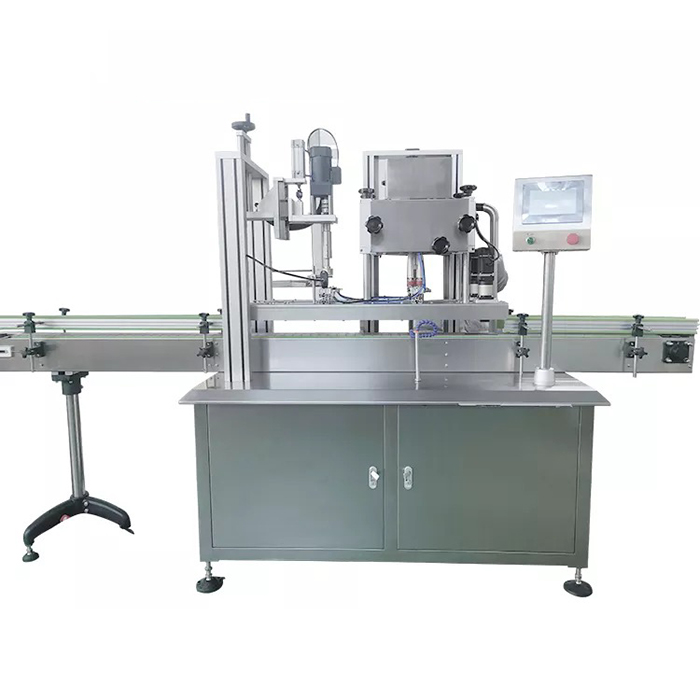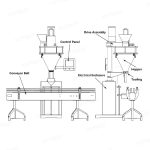Plastic bottles can be found everywhere in our daily life, they are used to package liquids or powders and solids, etc. Usually the bottles are sealed by a variety of caps. How are these caps used to seal bottles in bulk and quickly?
This guide mainly covers the following.
1. Brief introduction of plastic bottles
2. The capping technology of plastic bottles
3. How to choose the right plastic bottle capping machine
1. Brief introduction of plastic bottles
A plastic bottle is a bottle constructed from high-density or low density plastic. Plastic bottles are typically used to store liquids such as water, soft drinks, motor oil, cooking oil, medicine, shampoo, milk, and ink. The size ranges from very small bottles to large carboys. Consumer blow molded containers often have integral handles or are shaped to facilitate grasping.
Plastic bottles quickly became popular with both manufacturers and customers because of their lightweight nature, relatively low production, and transportation costs compared to glass bottles. However, the biggest advantage plastic bottles have over their glass counterparts is their superior resistance to breakage, in both production and transportation. Except for wine and beer, the food industry has almost completely replaced glass bottles with plastic bottles.

2. The capping technology of plastic bottles
Bottle capping machines for any project will be manufactured based on the type of closures that will be used for that project. Standard or custom, capping machinery can be designed as handheld, tabletop, semi-automatic or automatic machinery, to fit the production needs of packagers large and small. (This guide only discusses fully automated plastic bottle capping technology for industrial applications)
A plastic bottle capping machine is a machine that tightens or secures a container’s cap. Every company that fills products into plstic bottles, containers, or jars needs a way to close the container, and the most common closure is a cap. Three different styles of capping systems: Chuck Cappers, Spindle Cappers, and Snap Cappers.
Yes, bottle capping systems are available in a variety of sizes and shapes to accommodate the many different sized and shaped containers and caps that are out there. The type of capping and the speeds the project requires can also determine the size and shape of the machine.
Spindle Plastic Bottles Capping Machines
Spindle cappers are sometimes referred to as roller screw cappers. They work by passing a bottle and its cap between a set of spinning discs that causes the cap to turn in place. Fully automatic capping systems automatically place and torque caps on a container. Spindle cappers cap nearly every shape and size of round lug or screw-type cap, including those with odd tips or trigger tops. Automatic spindle cappers are capable of speeds of up to 200 CPM. Rotary chuck cappers would be the best solution for capping rates above 200 CPM.
Chuck Plastic Bottles Capping Machines
Chuck cappers secure a wide range of closures to their respective containers though the use of a rotating chuck head. After a cap is placed onto a container, a rotating chuck head is manually or automatically lowered over the cap. As the chuck head rotates, it torques the cap tight. Chuck cappers provide high torque values and work with a variety of cap styles, such as flat caps, oval caps, flip top caps, pull spouts, safety caps, childproof caps, sport caps, and caps with over-caps or induction seals. Chuck cappers come in a variety of styles, including automatic models (up to 60 CPM), as well as high-speed rotary systems (200+ CPM).
Snap Plastic Bottles Capping Machines
Snap cappers are bottle capping machines that replace the tedious work of manually pressing a closure onto a container until it snaps into place. To prevent spills, repetitive motion injuries, or otherwise general human error in applying this type of cap, a Snap Capping System is recommended. Snap cappers are used to place milk jug caps, dropper inserts, lip balm caps, over caps, “top hat” seals, twist caps with ratcheted rip seals, and a variety of other style closures.
3. How to choose the right plastic bottle capping machine
When discussing how to choose the right plastic bottle capping machine, we need to start from several dimensions.
Type of capping technology
On plastic bottle cappers, it’s very important to take into consideration deformation that may happen when the capper is holding the bottles to prevent rotation when applying the required torque. There are many solutions for this type of bottle capping problems and it will depend on the shape, rigidity, holding spots among others.
Capping machines come in many different shapes and sizes, with various techniques to seal bottles and other containers.
Spindle cappers and Chuck capping machines are both manufactured to handle one of the most abundant and popular closures across many industries, the continuous thread, screw-on type cap. These caps can take on many different forms, from simple flat caps found on bottled water and other plastic beverage bottles, to unusual closures such as trigger sprayers found on window and other cleaning items. Spindle capping machines use spinning disks to tighten down caps as they pass through sets of the disks, while chuck cappers use a chuck head to descend over the cap and bottle and apply torque to tighten the cap. The choice between the two machines will depend on a number of factors, including the shape and size of the bottles, the shape, size and type of screw-on closure, the desired speed and more.
A snap capping machine will normally include a slightly declining belt or bar that applies pressure to the cap as the cap and container move through the packaging machine. As the product reaches the end of the decline, enough pressure is applied to snap the cap securely in place. Some other snap capping machines may use a stomper that will descend as the cap and container pass beneath it, also snapping the cap into place. These techniques share a common theme in that the pressure is applied to the top of the cap, pressing down until the seal is completed.
Capping method & speed
Capping machine design falls into two basic categories - In-line cappers and rotary chuck-style cappers. These machines differ dramatically in both their core design as well as in their techniques for applying closures.
Using In-line machines, bottles traveling on the infeed conveyor of the machine are gripped on their outer edges by side gripping belts that are speed matched to the conveyor. The neck of the gripped bottle passes under the cap dispenser and a cap is stripped-out directly by the finish of the neck. The closure resting on the finish passes through a series of cap tightening wheels that spin the cap onto the threaded neck finish. One final pair of wheels, which are equipped with friction clutches, delivers the desired torque to the capped bottle. The capped bottle is then released from the gripping belts at the discharge of the capper. In-line cappers are typically speed limited to a maximum of 200 BPM.
On chuck-style cappers, the oriented closure at the end of the cap chute is not picked-up by the bottle. It is instead picked out of the chute by a cap transfer device, which then places it into the gripping chuck of a capping head. This pick-and-place mechanism can be either a rotary starwheel with pockets or pegs or can be individual pegs associated with each capping head station. Bottles on the in-feed conveyor of the machine enter an in-feed timing screw that separates them to match the specific pitch of the capping heads. Bottles are transferred to an in-feed star wheel, which then delivers them to the turret star wheel where they are placed and centered directly underneath the capping heads. The rotating capping head with a cap held in its gripping chuck descends onto the bottle and applies the cap to the desired torque. Application torque is controlled by a clutch mechanism within each capping head. Once the cap is applied, the jaws of the chuck open and the head rises off of the capped bottle. Bottles are restrained from rotating while the cap is applied by a gripping system while the bottle is in the turret starwheel. Capped bottles are then placed onto the exit conveyor by a discharge starwheel. Rotary Chuck cappers can be supplied with only one head to as many as 40 heads that operate at production speeds from as low as 10 bottles per minute (BPM) to speeds as high as 1200 BPM.
Type of bottle cap
For the common types of caps and the corresponding capping machine selection, please check: Glass Bottle Capping Machine: The Ultimate Guide
Summary
Plastic bottle capper, capping speed less than 200BPM, the most common is the linear spindle capping machine and linear chuck capping machine, for some edible oil bottle caps, you need to use the snap capping machine; capping speed greater than 200BPM, you need to use the rotary chuck capping machine.
There are no two exactly the same capping items, plastic bottle capping machine selection needs to be based on the size, shape, and capping method of the bottle and cap to make the best choice. To discuss your capping or sealing project with a packaging professional today, contact VKPAK.












